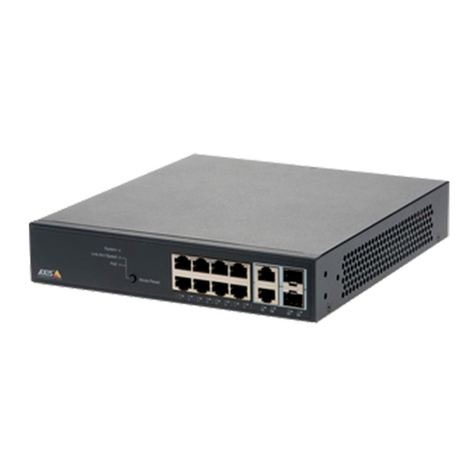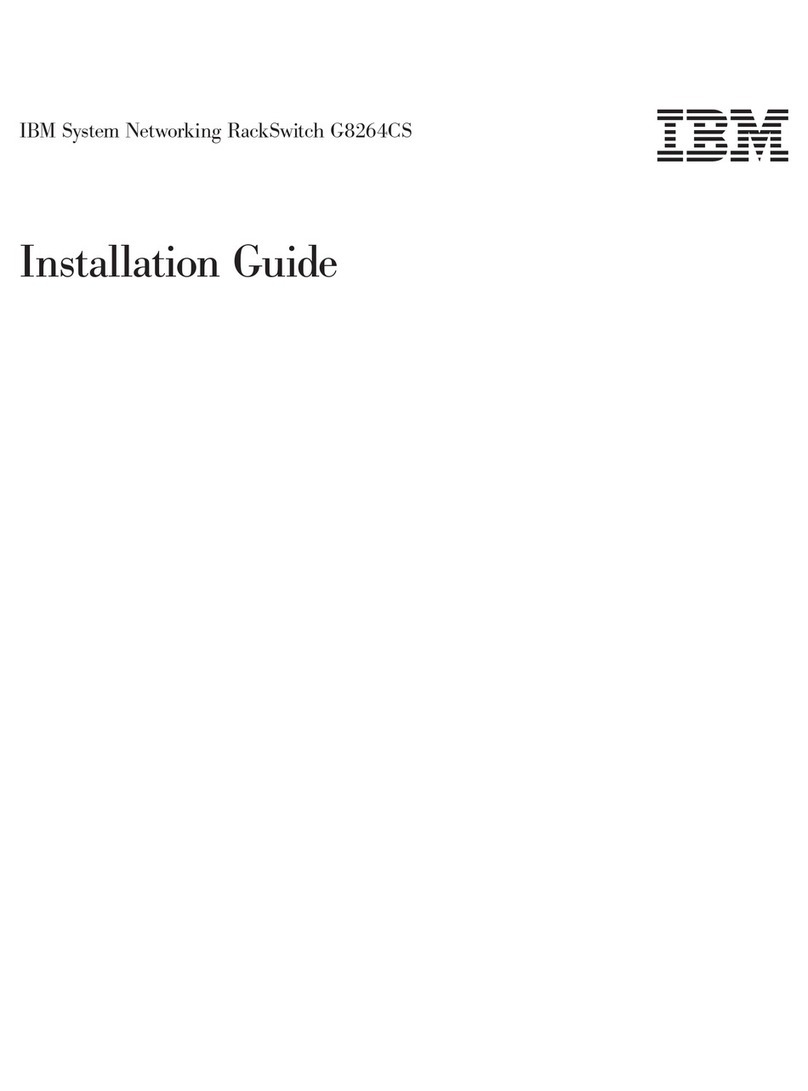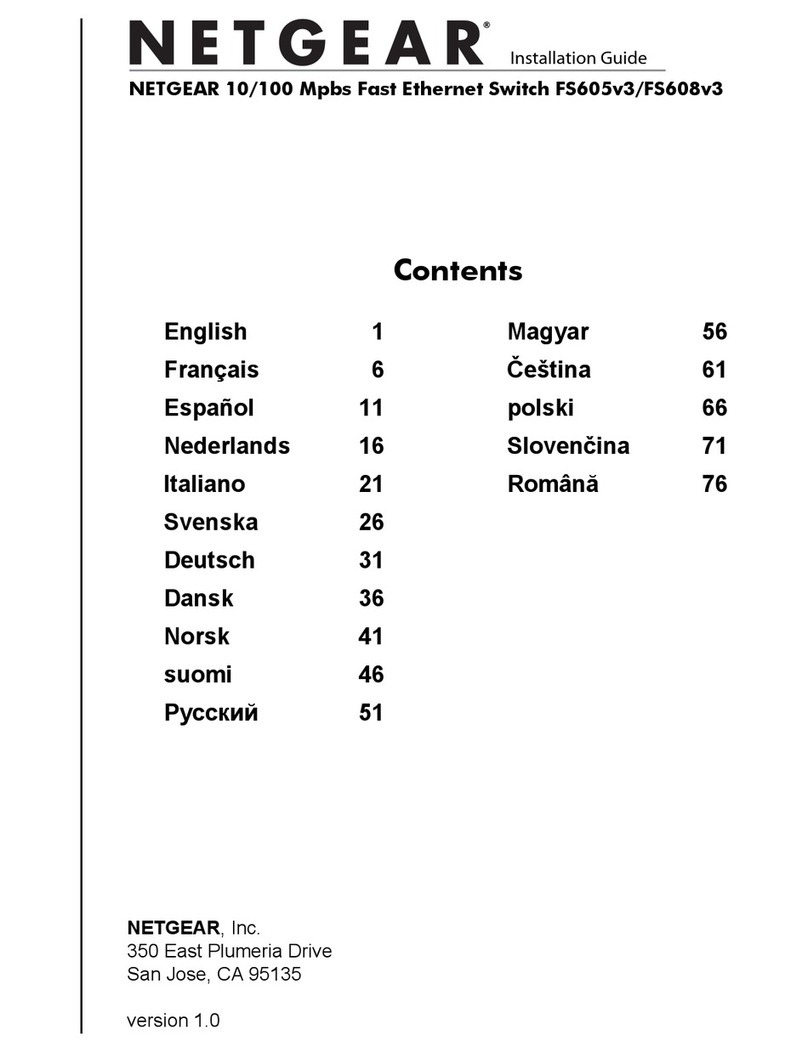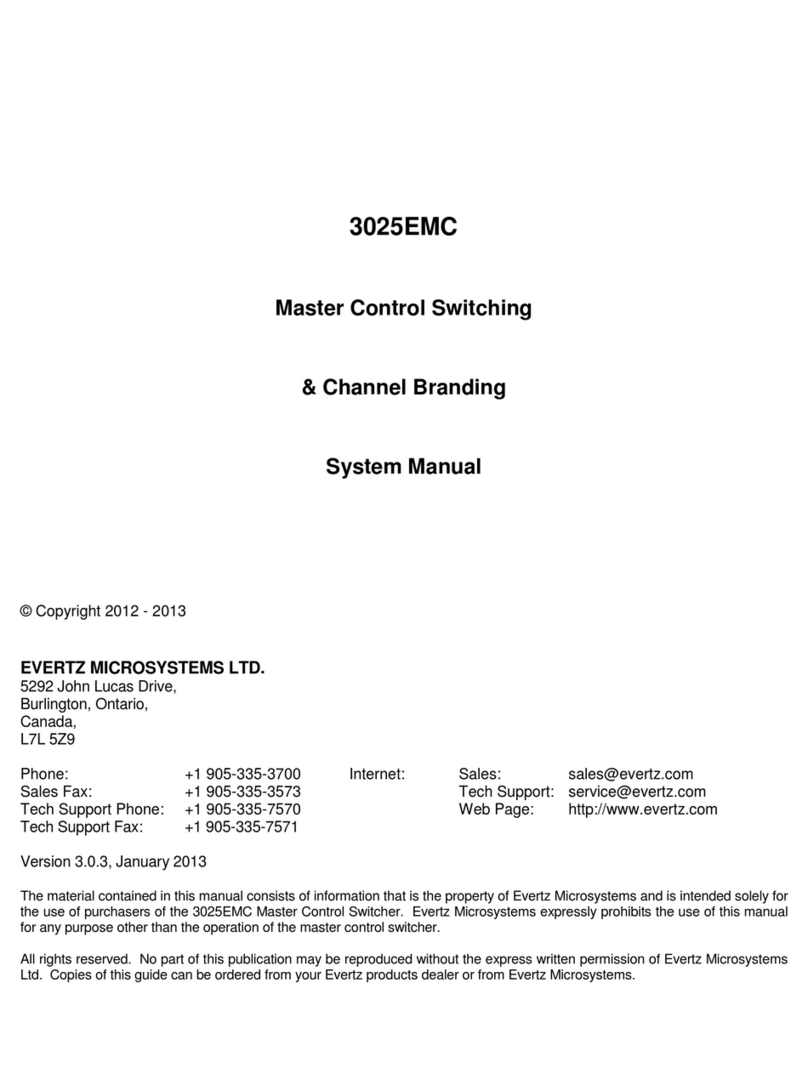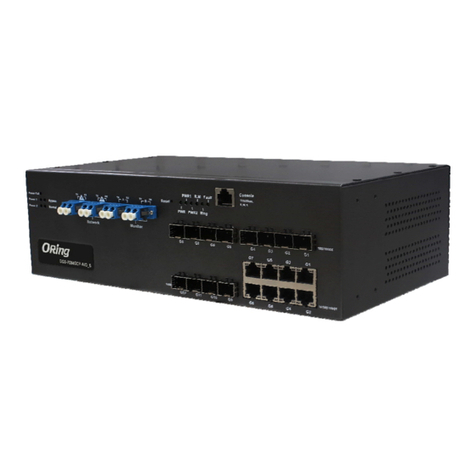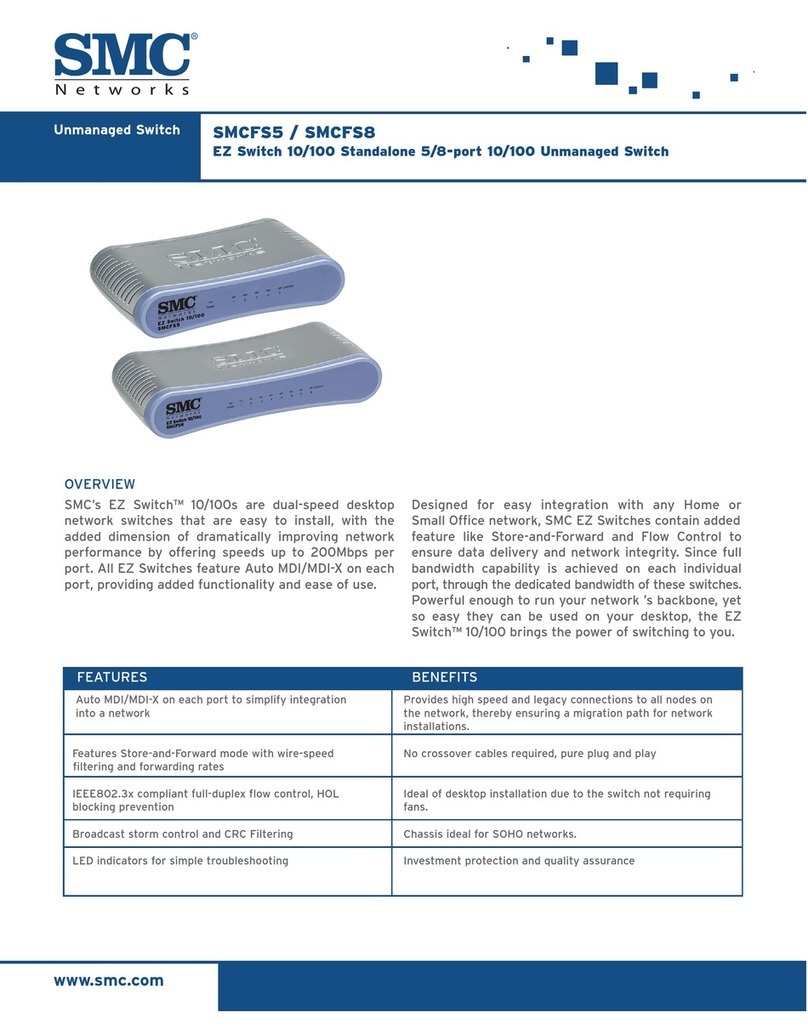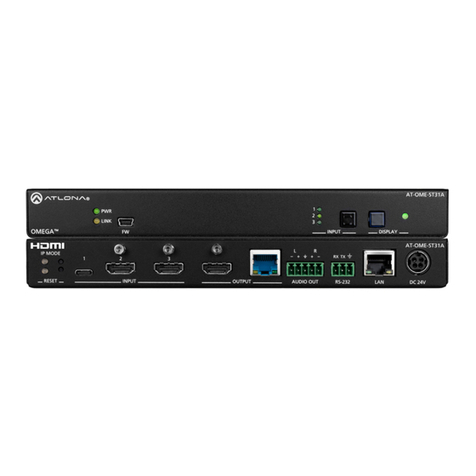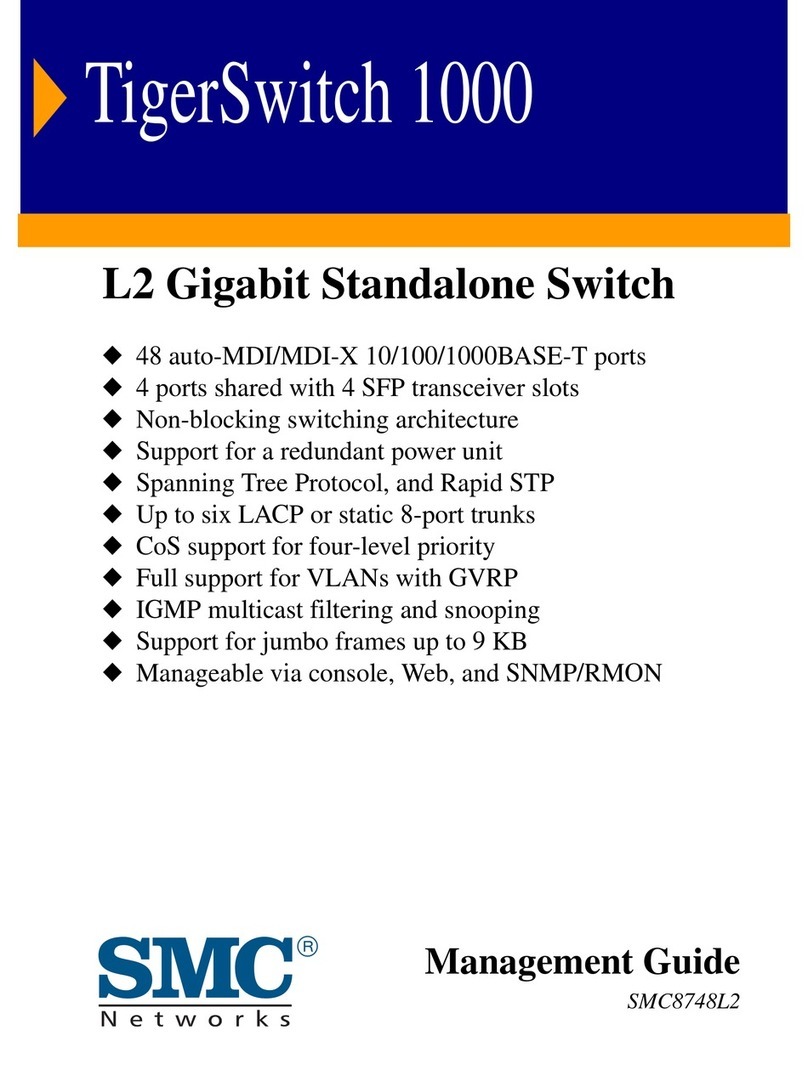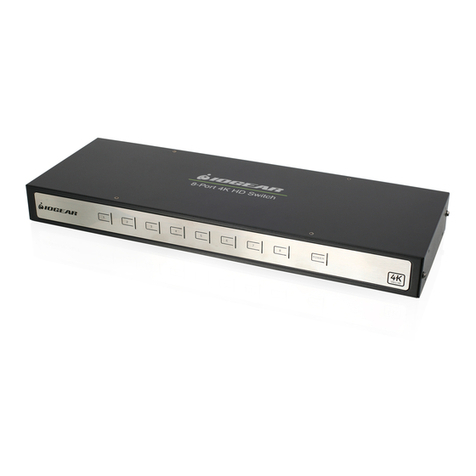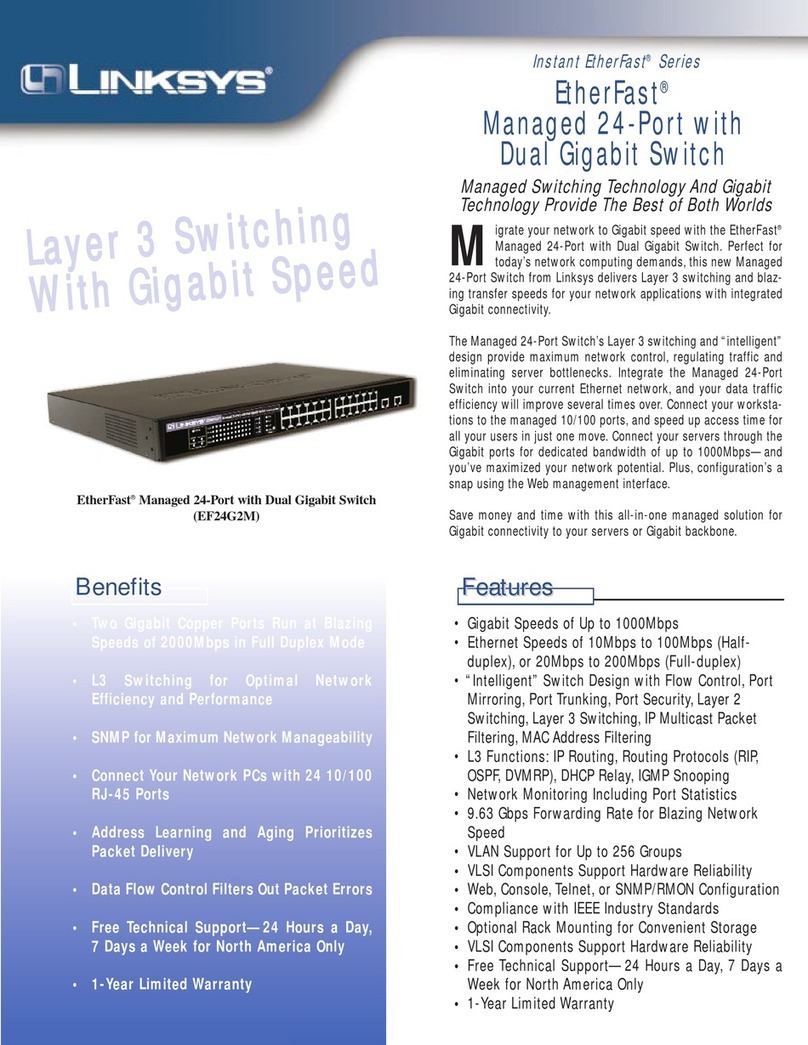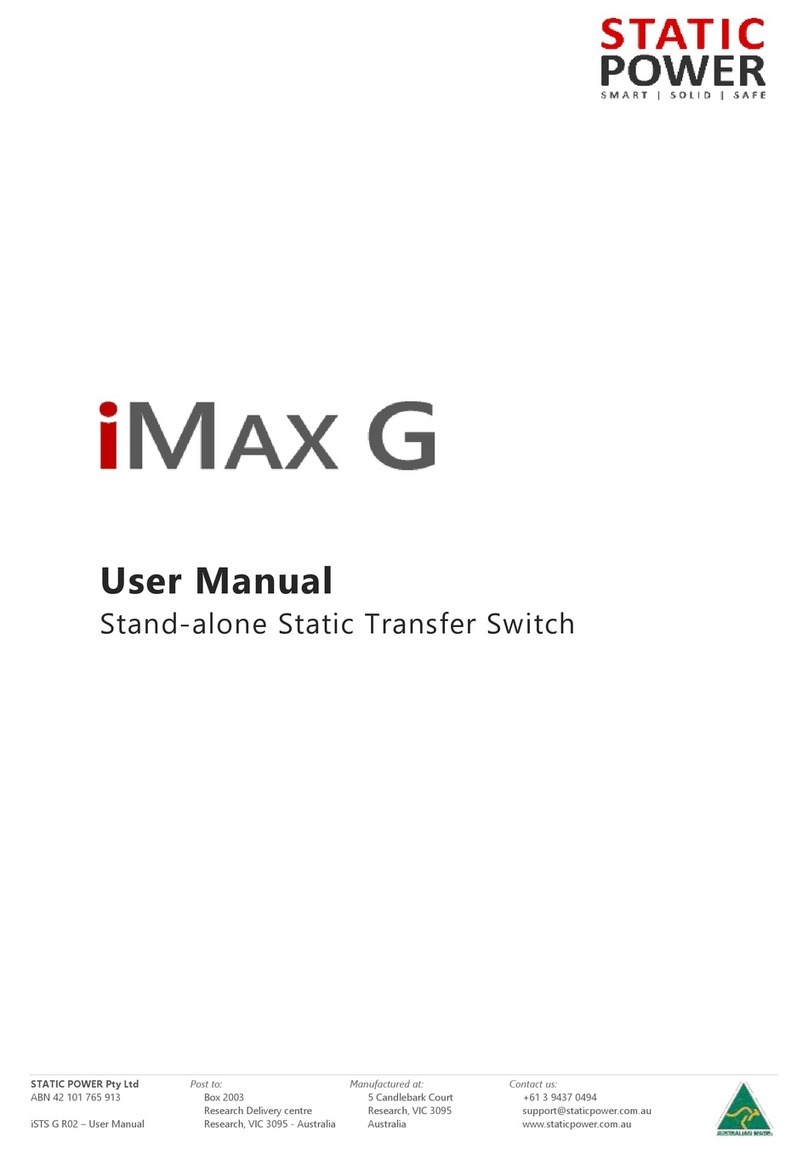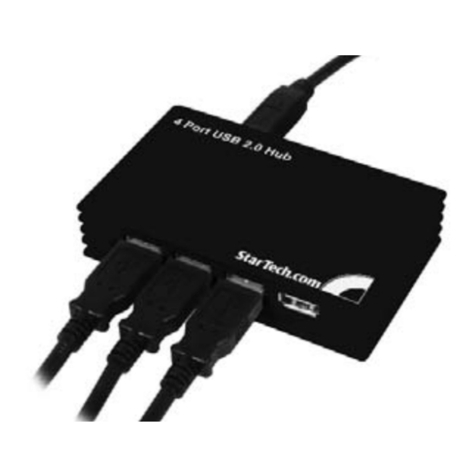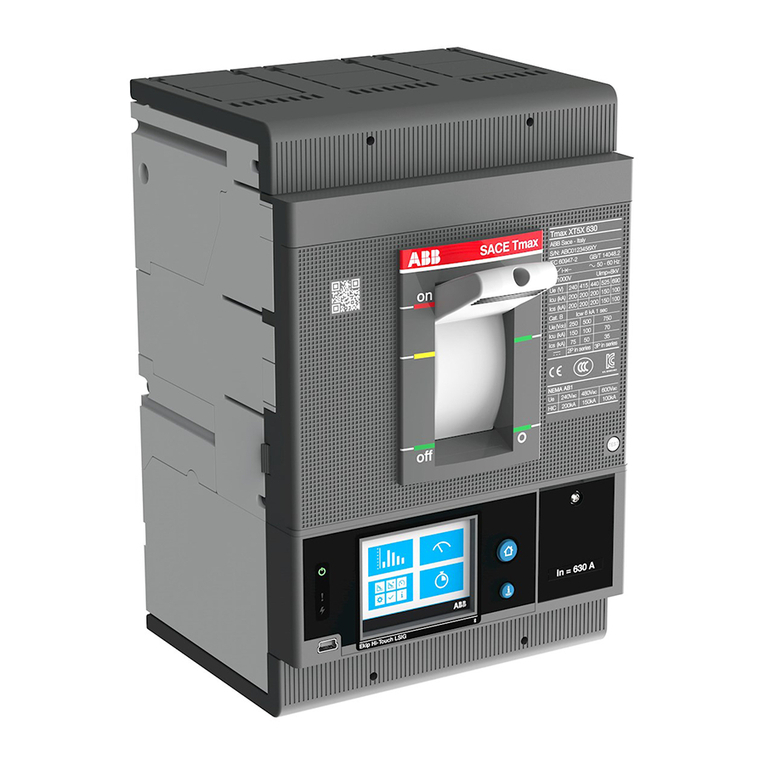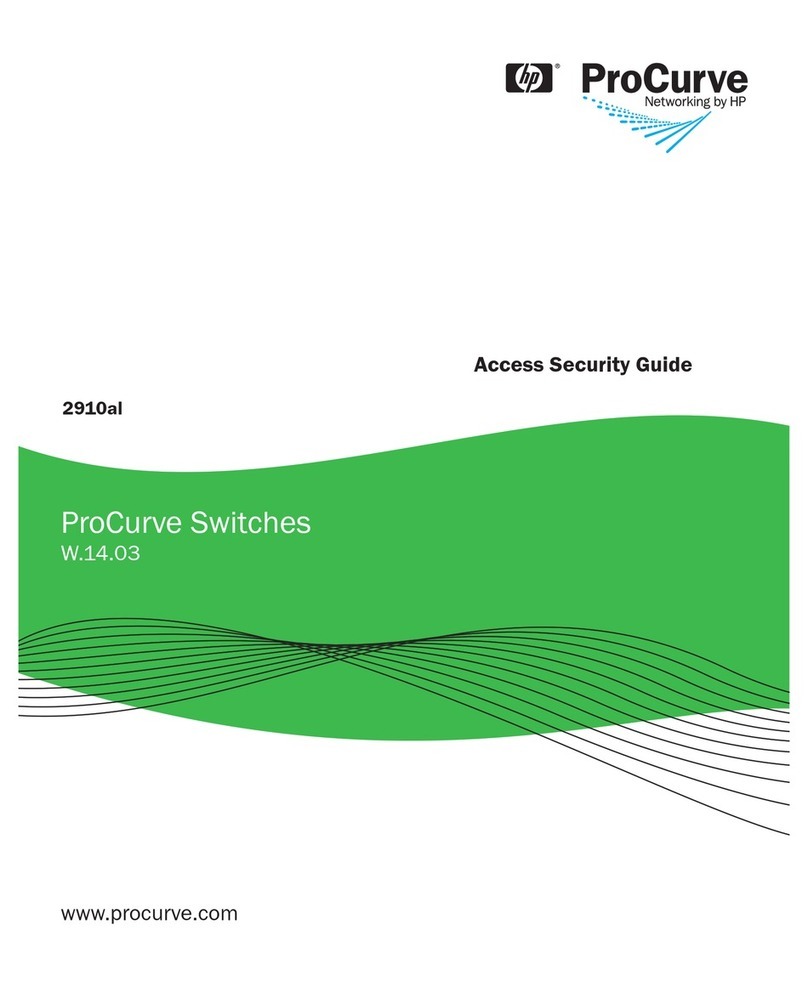INSYS GSM 4.2 easy User manual

Add-On Manual
INSYS GSM 4.2 easy
Oct-08


Copyright © October 08 INSYS MICROE ECTRONICS GmbH
Any duplication of this manual is prohibited. All rights on this documentation and the
devices are with INSYS MICROE ECTRONICS GmbH Regensburg.
Trademarks
The use of a trademark not shown below is not an indication that it is freely available for
use.
MNP is a registered trademark of Microcom Inc.
IBM PC, AT, XT are registered trademarks of International Business Machine Corporation.
INSYS ® is a registered trademark of INSYS MICROE ECTRONICS GmbH.
Windows™ is a registered trademark of Microsoft Corporation.
inux is a registered trademark of inus Torvalds.
Publisher:
INSYS MICROE ECTRONICS GmbH
Waffnergasse 8
D-93047 Regensburg, Germany
Phone: +49 (0)941/56 00 61
Fax: +49 (0)941/56 34 71
e-mail: [email protected]
Internet: http://www.insys-tec.de
Date: Oct-08
Item: 31-22-03.089
Version: 1.1
anguage: EN

Contents
4 Oct-08
1 Scope of Delivery...............................................................................................6
2 General ..............................................................................................................7
2.1 Application Possibilities of t e INSYS GSM 4.2 easy......................................................... 7
2.1.1 Remote Control via Mobile Phone or Data Connection .......................................... 8
2.1.2 Remote Programming via Data Connection .............................................................. 8
2.2 Possibilities wit t e Preceding Version INSYS GSM ........................................................ 8
2.3 Restrictions / Notes............................................................................................................ 9
3 Functional Description.....................................................................................10
3.1 Definitions........................................................................................................................ 10
3.1.1 Objects, Instances, Object Short Names ................................................................... 10
3.1.2 Alias..................................................................................................................................... 10
3.2 Automatic Actions............................................................................................................ 10
3.2.1 Object Instances Monitoring........................................................................................ 10
3.2.2 Periodic SMS ..................................................................................................................... 12
3.3 Querying and Controlling via SMS .................................................................................. 14
3.3.1 SMS Commands...............................................................................................................14
3.3.2 Monitoring of an Object Instance...............................................................................15
3.3.3 Setting an Object Instance............................................................................................ 17
3.3.4 Status Query .....................................................................................................................18
3.3.5 Status Change ..................................................................................................................18
3.4 New History-Entries ......................................................................................................... 19
4 Initial Operation ..............................................................................................20
4.1 Installation Overview....................................................................................................... 20
4.1.1 Installation for Configuration...................................................................................... 20
4.1.2 Installation for the operation with Moeller easy....................................................20
4.2 Initial Operation............................................................................................................... 21
4.3 Troubles ooting............................................................................................................... 23
4.3.1 No response on commands ..........................................................................................23
4.3.2 No connection established ........................................................................................... 23
4.3.3 Alarm SMS is not dispatched........................................................................................23
4.3.4 Signal Quality ...................................................................................................................24
4.4 Log-In State in GSM Network .......................................................................................... 25
5 Configuration wit t e Software HSComm easy ............................................26
5.1 General ............................................................................................................................. 26
5.2 Help .................................................................................................................................. 26
5.3 Menus ............................................................................................................................... 26
5.3.1 File .......................................................................................................................................26
5.3.2 Interface.............................................................................................................................26
5.3.3 Program Settings.............................................................................................................27
5.3.4 Terminal............................................................................................................................. 27
5.3.5 Sprache / anguage ........................................................................................................27
5.3.6 Overview............................................................................................................................27
5.3.7 Send / Receive Protocol.................................................................................................. 27
5.3.8 Info ......................................................................................................................................27
5.3.9 Help.....................................................................................................................................27
5.4 Status Bar ......................................................................................................................... 27

Contents
Oct-08 5
5.5 Buttons ............................................................................................................................. 28
5.5.1 Send Settings.................................................................................................................... 28
5.5.2 Read Settings....................................................................................................................28
5.5.3 Send default setting .......................................................................................................28
5.5.4 Reset.................................................................................................................................... 28
5.5.5 Synchronize....................................................................................................................... 28
5.5.6 Abort ................................................................................................................................... 28
5.6 Tabs................................................................................................................................... 29
5.7 Basic Settings ................................................................................................................... 29
5.7.1 GSM Connection..............................................................................................................30
5.7.2 System Monitoring ......................................................................................................... 32
5.7.3 Date / Time........................................................................................................................32
5.7.4 Serial Interface .................................................................................................................32
5.8 Moeller easy™ Settings ................................................................................................... 33
5.8.1 Alias Configuration.........................................................................................................34
5.8.2 Configure monitoring .................................................................................................... 35
5.8.3 Configure Periodic SMS..................................................................................................36
6 Remote Configuration wit EASY-SOFT and INSYS Connect ...........................37
7 Declaration of Conformity...............................................................................39

6 Oct-08
1 Scope of Delivery
Please check the scope of delivery before initial operation:
INSYS GSM 4.2 easy
PC connection cable 9/9 pin (RS232)
User Manual INSYS GSM 4.2
Additional Manual INSYS GSM 4.2 easy
CD-ROM
In case the content is not complete, please contact your supplier. Please check the
device for shipping damage. Please also refer to your supplier if damage exists.
Please keep the packaging material for dispatch or storage.
Optional Accessories
Adapter cable D-SUB 9 pin, male to 9 pin, male
GSM aerial
• Outside mounted aerial, magnetic base aerial or patch aerial
Connection cable GSM easy 500 for connecting the INSYS GSM 4.2 easy to
a Moeller easy 500/700 (Art.-Nr.: 31-02-02-011)
Connection cable GSM easy 800 for connecting the INSYS GSM 4.2 easy to
a Moeller easy 800/MFD (Art.-Nr.: 31-02-02-012)

2 General
Basically, the INSYS GSM 4.2 easy offers the same technical characteristics and
functionalities as the standard version.
The indication of technical data and functional descriptions of the standard ver-
sion will be omitted in this manual (if possible). Please refer to the user manual
INSYS GSM 4.2.
If the INSYS GSM 4.2 easy behaves differently than the standard version, we will
mention this fact in the according passages.
The INSYS GSM 4.2 easy is available in two versions. These are
INSYS GSM 4.2 easy
INSYS GSM 4.2 easy compact
The INSYS GSM 4.2 easy compact differs by a compact housing for in-wall connec-
tion boxes and the missing audio interface from the INSYS GSM 4.2 easy. Both
versions are referred to as INSYS GSM 4.2 easy in the further course of this man-
ual. If the INSYS GSM 4.2 easy compact differs from the INSYS GSM 4.2 easy, this
will be mentioned in particular in the respective sections.
Supported Moeller easy versions:
The following easy models are supported:
easy 500
easy 700
easy 800
easy MFD
The communication protocols of the easy 500 and the easy 700 as well as the pro-
tocols of the easy 800 and easy MFD are identical as file. In the following, we only
need to distinguish between easy 500/700 and easy 800/MFD.
Dedicated connection cables are available for the connection (refer to Optional
Accessories in the in the Scope of Delivery section on page 6)
2.1 Application Possibilities of t e INSYS GSM 4.2 easy
The object instances (peripherals and extension modules) of the easy device can
be monitored regarding defined conditions or levels, to enable the sending of
fault messages when changes occur. Depending on the used easy model, not all
object instances are available.
The following object instances can be monitored:
Digital inputs
Digital outputs

8 Oct-08
Digital registers
Analogue inputs
Analogue outputs
Analogue registers (byte registers, word registers, double word registers)
Current program cycle time
ED state for Moeller easy MFD
The fault message consists of one text, which is permanently allocated to the
value to be monitored. Up to 10 object instances can be monitored altogether.
The fault message can be sent in the following format:
Via SMS to a mobile phone
Via SMS to a fixed network telephone (depending on the provider)
Via SMS to a FAX device (depending on the provider)
Via SMS to an E-mail recipient (depending on the provider)
2.1.1 Remote Control via Mobile P one or Data Connection
Independent from automatic monitoring, various information regarding the cur-
rent condition of the easy device can be read or set via SMS or a GSM data connec-
tion:
easy status (RUN/STOP/ERROR). The easy status can also be changed from
RUN to STOP or vice versa.
Monitoring of the easy object instances. This message can also be per-
formed automatically (refer also to section 3.2.2).
Setting of the easy object instances. This can be done from a mobile phone
or via a dial up connection. It will enable you to intervene actively in the
process of the easy control program.
2.1.2 Remote Programming via Data Connection
A dial up connection is established with the help of the dialling program “INSYS
Connect” for the remote programming of the easy device. The supplied program
“EASY Soft” by Moeller is used to program the remote easy device. The INSYS GSM
4.2 easy serves as remote terminal of the dial up connection and forwards the
data transparently to the Moeller easy device.
2.2 Possibilities wit t e Preceding Version INSYS GSM
The possibility to control the alarm inputs of the INSYS GSM with pulses, thus
triggering up to 20 fault messages, has been implemented into the device series
INSYS GSM and can still be used. This possibility is not tied to a device and can
therefore be used for all kinds of control types.
Generating pulses or their processing, however, results in the following:

The controller requires additional memory for the functions to generate
pulses. Compact controllers in particular have a rather limited memory for
control programs.
Due to additional functions which have no effect on the actual system
function, the control program will be more complex and confusing.
Programming pulse creation requires effort and time.
Valuable outputs of the compact controllers are used, because they are
needed for the pulse output.
2.3 Restrictions / Notes
Since the INSYS GSM 4.2 easy is connected to the Moeller easy device via a
serial interface, a memory can not be used simultaneously with the INSYS
GSM 4.2 easy.
The password protection of the easy device may not be activated. If it is ac-
tivated, no communication between INSYS GSM 4.2 easy and the compact
controller is possible. However, the INSYS GSM 4.2 easy has its own pass-
word protection, which prevents unauthorized persons without knowledge
of the exact password from remotely accessing the compact controller.
The CD display needs to be in its original state before the Moeller easy
controllers can communicate via their RS232 interface. This means, for ex-
ample, that if the controller is put into another condition by hitting keys on
the device, or if the control program is manually modified, the user has to
leave all sub menus of the easy device. This is necessary that the INSYS
GSM 4.2 easy can communicate with the easy device.
As it is possible to intervene in registers of the current easy control pro-
gram with the help of SMS commands via the INSYS GSM 4.2 easy we again
refer to the documentation of the used Moeller easy 800 or easy MFD de-
vices. In the easy device, the storage location for registers can be used
twice; the instances of the registers should therefore be chosen with care
to prevent the registers from manipulating each other.
Recommendation:
Object Instance from
Bit register M 1
Byte register MB 13
Word register MW 49
Double word register MD 49

10 Oct-08
3 Functional Description
3.1 Definitions
3.1.1 Objects, Instances, Object S ort Names
Programming of the Moeller easy takes place via objects. A digital input, a regis-
ter, a counter for operating hours, a comparator, etc. are all examples for objects.
Each object has an object short name. The digital register, for example, has the
object short name "M", the analogue output has the short name "QA".
Several instances of each object are available to the programmer. The easy 500
device, for example, offers 16 digital registers “M”. The programmer can therefore
select the object instances "M1" to "M16".
3.1.2 Alias
As not only the programmer of the compact controller is responsible for mainte-
nance and operation of the Moeller easy device, it may not be clear for “outsiders”
which object instance has which function. Therefore, so-called aliases were intro-
duced for the INSYS GSM 4.2 easy. This offers the possibility to allocate a name
that is easy to understand. If the Moeller easy device controls a waste water sys-
tem, for example, the digital register M1 can be allocated the alias "waste water
pump1”. If an individual wants to activate the wastewater pump via mobile
phone, using an SMS, he does not need to know that the register 1 must be used,
but simply uses the term “wastewaterpump1”, Up to 30 object instances all in all
can be allocated aliases.
3.2 Automatic Actions
3.2.1 Object Instances Monitoring
The values of the easy object instances are monitored to enable a fault message
when values are changed.
Monitoring is performed during polling operation, i.e. the INSYS GSM 4.2 easy will
cyclically read out the easy object instances and can thus detect any changes. Up
to 10 object instances can be monitored altogether.
The query interval can be set to seconds (1 to 255 seconds). These times represent
minimum values. The actual monitoring interval may be slightly larger. If several
values that need to be monitored have been configured, the communication with
the compact controller may have a longer duration than the interval.
If a change of a monitored value is registered, the sending of a fault message is
prompted (SMS, SMS to fax, SMS to e-mail, SMS to fixed network).
For digital values, the following events (adjustable) can cause the sending of a
fault message:
Change to 0

Change to 1
Any change
For analogue values, an upper and a lower limit must be defined. The following
events (adjustable) can cause the sending of a fault message:
The value leaves the target range (lower limit ... upper limit)
The value enters the target range (lower limit ... upper limit)
Any change in ranges
In addition, the option “no monitoring” may be set for each monitored object in-
stance. This means that an already configured object instance can be excluded
from the monitoring process without losing the object instance setting.
The fault message for each monitored object instance is a freely configurable text.
For each monitored object instance, an individual phone number can be set as re-
cipient of the fault message.
As for each automatic SMS dispatch with the INSYS GSM 4.2 easy, the dispatch
can be set for resending in case of errors (default: 3 attempts).
We recommend pressing the reset button briefly after changing a configuration
to execute a restart of the device.
Note: Using t e alarm inputs
The usage of the 20 alarm inputs is independent from the functionality of the IN-
SYS GSM 4.2 easy.
Be aviour after reset or power up
After a reset or a power up of the INSYS GSM 4.2 easy, values of object instances,
which are not within the configured target state, will not trigger a fault message.
The condition of the easy device will be accepted without being rated. Only if the
values are still outside of the target range after the second monitoring cycle will
an alarm message be sent.
Timing
The shortest polling cycle is 1 second, i.e. signals shorter than 1 second will gener-
ally not be recognized.
The object instances are not automatically queried if the INSYS GSM 4.2 easy is
busy with the following actions:
Field strength query and login state query, duration approx. 5 s, interval
60 s, may be switched off.
SMS input buffer and processing of SMS, duration approx. 5 s, interval 60 s,
may be switched off.
Established GSM connection (data connection, DTMF connection, security
callback)
SMS dispatch (fault message, alive SMS can be switched off, power-up SMS
can be switched off, duration approx. 10 s)

12 Oct-08
For the values to be monitored applies that all changes must be effective until the
automatic polling is performed again. This applies to most applications (e.g. fill
level monitoring or protective motor switch).
Monitoring with INSYS GSM 4.2 easy is mainly intended for static signals and val-
ues.
If the used signal (e.g. pulse) does not comply with these requirements, this signal
must be directed to an ON or OFF delay or a RS flip-flop in the control program.
Occurrence of several faults/c anges
If several changes occur during a polling interval, the according messages are sent
in the same order in which they were set during the configuration of the INSYS
GSM 4.2 easy. The monitored value 1 is therefore queried prior to the monitored
value 2. If exceeding or changing of values is detected, the system will immedi-
ately attempt to send the alarm message.
If another monitored value changes during the alarm processing, this new alarm
is only detected if the value change lasts until the processing of the previous
alarm is completed. Now the regular polling will restart.
3.2.2 Periodic SMS
In addition to the monitoring of values, it is also possible to periodically query the
current condition or value of an object instance and to send it automatically via
SMS.
A periodic SMS can be sent in hourly intervals of 1 to 255 h. After this time has ex-
pired, the set object instance is read out and the value is sent as SMS.
The query of the object instance is performed up to three times, if necessary. If
there is still no reply from the easy device, an SMS with the text „NO SUCCESS” is
sent instead of the object instance value.
The sending of this SMS will be delayed, if one of the following functions is per-
formed at this moment:
ogin state/field strength query (the EDs STATUS and SIGNA are up-
dated); duration approximately 50 seconds, interval 60 seconds (may be
switched off, but then the EDs are no longer operated)
Query of the SMS input buffer and processing of incoming SMS commands,
if required; duration approximately 5 seconds plus processing time for
command; interval 60 seconds (may be switched off, but then que-
ries/configuration via SMS are no longer possible)
GSM connections active (data connection, DTMF connection, security call-
back)
Sending an SMS (fault message, Alive SMS may be switched off, Power up
SMS may be switched off); duration approximately 10 seconds.
If the OGOUT time is active when the periodic SMS are processed, the module is
logged in at the GSM network before sending, and logged out afterwards.
Periodic SMS are only sent to one destination. The usage of further recipients is
not possible.

The text of a periodic SMS consists of an object short name, its instance, a “=”, and
finally the value itself. If an alias was defined for periodically transmitted object
instances, this alias is entered in the SMS text instead of the object short name
and the instance.
Example: M12=1

14 Oct-08
3.3 Querying and Controlling via SMS
3.3.1 SMS Commands
Many of the INSYS GSM 4.2 easy functions can be configured via SMS (the func-
tion automatic SMS processing must be activated). It is furthermore possible to
access the inputs and outputs of the INSYS GSM 4.2 easy indirectly via registers.
For the INSYS GSM 4.2 easy it is also possible to query various information regard-
ing the state of the easy device via SMS, or the control program that is running on
it. It is also possible to change values of the running program with commands.
The evaluation of incoming SMS messages is performed once a minute in the IN-
SYS GSM 4.2 easy. During this time, no polling of the monitored object instances is
performed (function "Value monitoring").
All SMS commands must have the following syntax:
[<password>,]<command>[,CN: <reply>]
CN means Callback Number
<password> Password for remote configuration and SMS query. If no
password is set, the separating comma is dropped also. No
space character is permitted between password, comma and
command.
<command> Command to be executed, with parameters
<reply> Optional callback number to which the response is sent via
SMS. If no reply SMS is desired, the separating comma is
dropped also. Between command, comma and "CN:" no space
character is permitted. After "CN:" a space character must be
entered
Note: T e c aracters „[“, „]“, „<“ and „>“need not be sent. T ey are merely
used in t e syntax description to indicate t e parameters „<“ and „>“
as well as optional parameters „[“ and „]“.

3.3.2 Monitoring of an Object Instance
Command:
MONITOR <Ob ectshortname><Instance>,CN:[ Callback]
or:
MONITOR <Alias>,CN:[ Callback]
A reply with the value of the object instance or the alias follows.
The query of the object instances is performed up to three times, if necessary. If
there is still no reply from the easy device, an SMS with the text „NO SUCCESS“ is
sent instead of the SMS with the current value.
The specification of the character string “CN:” is required. If the reply should be
sent to another number than the sender number of the monitor command, an
additional space character and the callback number must be entered after the
character string "CN:" (see "Example 2" on the following side).
Valid objects for the easy 500/700 are:
Object Object s ort name
Digital inputs I
Extended digital inputs R
Digital outputs Q
Extended digital outputs S
Digital registers M
Digital registers N
Analogue inputs IA
Analogue outputs QA

16 Oct-08
Valid objects for the easy 800/MFD are:
Object Object s ort name
Digital inputs I
Extended digital inputs R
Digital outputs Q
Extended digital outputs S
Digital registers M
Analogue byte register MB
Analogue word register MW
Analogue double word register MD
Analogue inputs IA
Analogue outputs QA
Diagnosis bits D
EDs
Current program cycle time Z
Time U
Example 1: Query of t e object instance M12
MONITOR M12,CN:
In this case, an SMS is sent to the INSYS GSM 4.2 easy, which includes the com-
mand for the query of object instance M12. The reply SMS should be sent to the
sender phone number which sent this command SMS to the INSYS GSM 4.2 easy.
Example 2: Query of t e alias "Pump" wit password "SECRET" and separate call-
back number „0123456789“
SECRET,MONITOR PUMP,CN: 0123456789
In this case, the alias „PUMP“ is linked to an object „analogue byte register“, „ana-
logue word register“ or „analogue double word register“.

3.3.3 Setting an Object Instance
Command:
SET <Ob ectshortname><Instance>=<Value>[,CN:[ Callback]]
or:
SET <Alias>=<Value>[,CN:[ Callback]]
The object instance is set to the according value.
If callback is desired, the reply will contain „SUCCESS“ for a successful setting
procedure or „NO SUCCESS“for a failed setting procedure.
The specification of „CN:“ is optional. If the reply should be sent to another num-
ber than the sender number of the monitor command, an additional space char-
acter and the callback number must be entered after „CN:“.
Valid objects for the easy 800/MFD are:
Object Object s ort name Valid values
Digital registers M 0 or 1
Analogue byte regis-
ter
MB 0 to 255
Analogue word reg-
ister
MW 0 to 65535
Analogue double
word register
MD -2147483648 to
2147483647
Valid objects for the easy 500/700 are:
Object Object s ort name Valid values
Digital registers M 0 or 1
Digital registers N 0 or 1
Example 1: Setting the object instance M12 to 1:
SET M12=1,CN:
In this case, an SMS is sent to the sender number of the command, which sets the
value of the object instance M12 to 1.
Example 2: Setting the alias „Pump“ with password „SECRET“and separate call-
back number „0123456789“:
SECRET,SET PUMP=123,CN: 0123456789
In this case, the alias „PUMP“ is linked to an object „analogue byte register“, „ ana-
logue word register “ or „analogue double word register “.
Note: T eoretically it is possible to set all ot er object instances, too. IN-
SYS MICROELECTRONICS recommends paralleling t e correspond-
ing registers wit in t e configuration program of t e easy to avoid
impact on t e proper function of t e easy objects. E.g. it is not rec-

18 Oct-08
ommended to switc objects like digital inputs directly. On t e
ot er and it is uncritical to set a parallel connected bit register to
simulate t e setting of digital input wit in t e configuration pro-
gram (e.g. imitate t e triggering of a sensor).
3.3.4 Status Query
Command:
STATUS?,CN:[ Callback]
This reply indicates the status of the easy device.
The query of the status is performed up to three times, if necessary. If there is still
no reply from the easy device, an SMS with the text „NO SUCCESS“ is sent in-
stead of the status SMS.
Of course, a callback number („CN:“) is required. This means that you have to en-
ter at least the character string „CN:”. If another callback number is desired, after
the character string „CN:” an additional space character and the phone number
must be entered (see previous example).
The response may contain the following:
Status Meaning
RUN The easy device is in operating mode RUN
STOP The easy device is in operating mode STOP
NO SUCCESS
The easy device does not reply (cable not connected ...)
3.3.5 Status C ange
Command:
STATUS=<easy-Status>[,CN: [Callback]]
easy-Status Meaning
RUN Switch on easy device, run control program.
STOP Switch off easy device, terminate control program.
NO SUCCESS
The easy device does not reply (cable not connected ...)
The query of the status to the easy device is performed up to three times, if neces-
sary. If there is still no reply from the easy device, an SMS with the text „NO SUC-
CESS“ is sent instead of „OK“.
If the easy device does not acknowledge the status change, the reply SMS will
send the message „ERROR“. This can also occur when a status is set in which the
easy device is already running.
A callback number („CN:“) is not required. Without a callback number, however,
there will be no reply (see easy status query).

3.4 New History-Entries
The description of the history functionality of the INSYS GSM 4.2 easy can be found in the
supplied manual of the INSYS GSM 4.2. Due to the extended functionality of the INSYS
GSM 4.2 easy, there are several additional entries in the history memory:
Cause Detail Meaning
PLC ERROR When communicating with the easy device, there
was no response after 3 attempts.
PLC PERIODIC The process “Periodic SMS” starts.
PLC PARM An object instance was set.
SYSTEM
PLC CHANGE A monitored object instance has changed its
value.

20 Oct-08
4 Initial Operation
4.1 Installation Overview
4.1.1 Installation for Configuration
The serial interface (RS232) of the INSYS GSM 4.2 easy and the configuration PC
are connected for initial operation and configuration.
The cable used for the RS232 is the default supplied 9-pin cable with 9-pin D-SUB
plug / 9-pin D-SUB jack.
4.1.2 Installation for t e operation wit Moeller easy
For the operation with the Moeller easy, suitable connection cables are available
(refer to Optional Accessories in the section Scope of Delivery on page 6). Alterna-
tively, the 30 cm long INSYS adapter cable may be used.
The connection of the connection cables is described in the respective supplemen-
tary sheet. For connecting the adapter cable, the part of the cable with the fasten-
ing nuts is connected to the easy PC cable of the Moeller device, which is con-
nected to the Moeller easy device on the other side. The part of the cable with the
fastening nuts is connected to the D-SUB jack of the INSYS GSM 4.2 easy.
Note: Every time t e PC and t e Moeller easy device are unplugged, t e IN-
SYS GSM 4.2 easy must be restarted (press reset button).
Other manuals for GSM 4.2 easy
1
Table of contents
